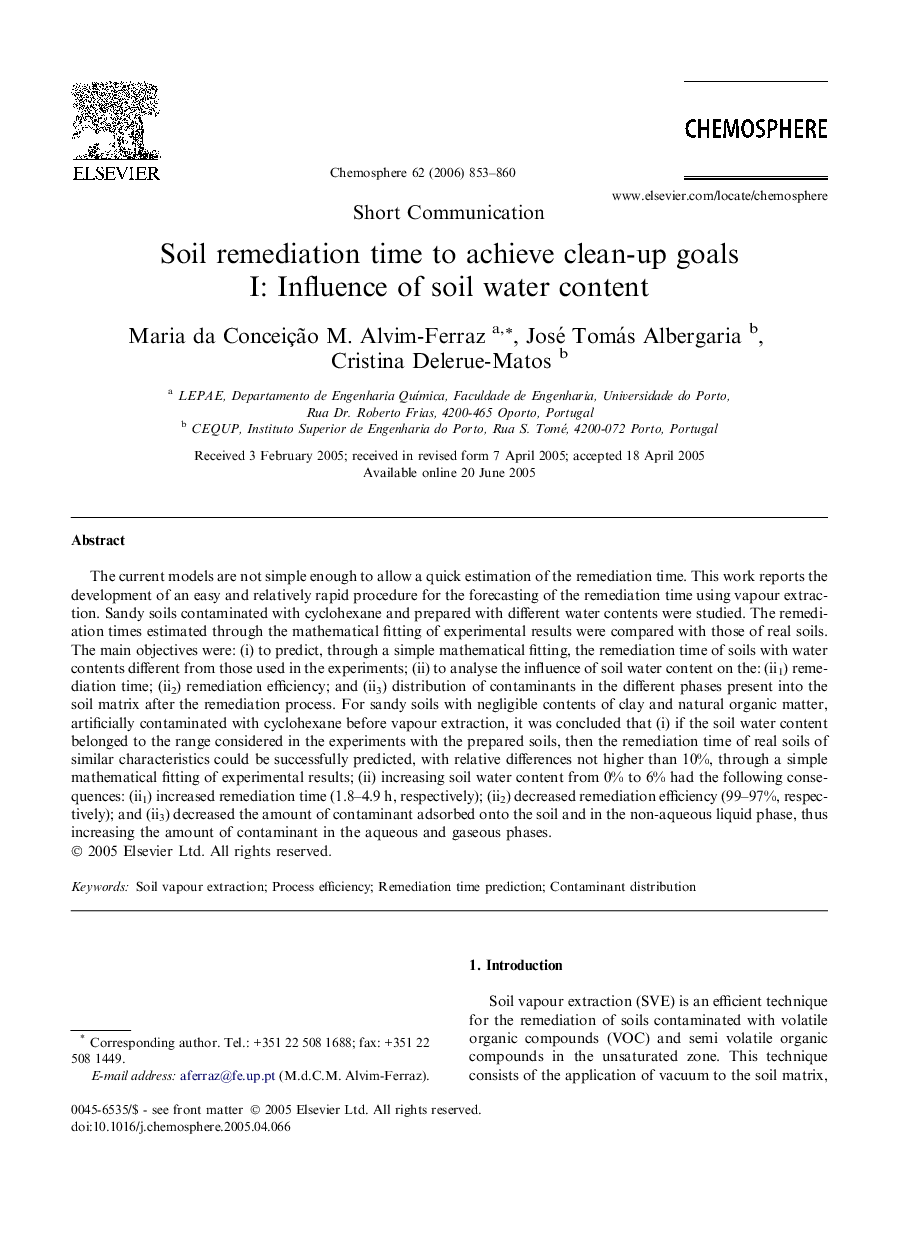| کد مقاله | کد نشریه | سال انتشار | مقاله انگلیسی | نسخه تمام متن |
|---|---|---|---|---|
| 4416863 | 1307802 | 2006 | 8 صفحه PDF | دانلود رایگان |

The current models are not simple enough to allow a quick estimation of the remediation time. This work reports the development of an easy and relatively rapid procedure for the forecasting of the remediation time using vapour extraction. Sandy soils contaminated with cyclohexane and prepared with different water contents were studied. The remediation times estimated through the mathematical fitting of experimental results were compared with those of real soils. The main objectives were: (i) to predict, through a simple mathematical fitting, the remediation time of soils with water contents different from those used in the experiments; (ii) to analyse the influence of soil water content on the: (ii1) remediation time; (ii2) remediation efficiency; and (ii3) distribution of contaminants in the different phases present into the soil matrix after the remediation process. For sandy soils with negligible contents of clay and natural organic matter, artificially contaminated with cyclohexane before vapour extraction, it was concluded that (i) if the soil water content belonged to the range considered in the experiments with the prepared soils, then the remediation time of real soils of similar characteristics could be successfully predicted, with relative differences not higher than 10%, through a simple mathematical fitting of experimental results; (ii) increasing soil water content from 0% to 6% had the following consequences: (ii1) increased remediation time (1.8–4.9 h, respectively); (ii2) decreased remediation efficiency (99–97%, respectively); and (ii3) decreased the amount of contaminant adsorbed onto the soil and in the non-aqueous liquid phase, thus increasing the amount of contaminant in the aqueous and gaseous phases.
Journal: Chemosphere - Volume 62, Issue 5, February 2006, Pages 853–860